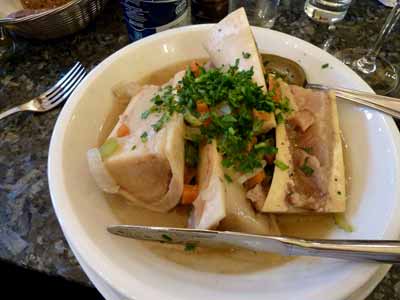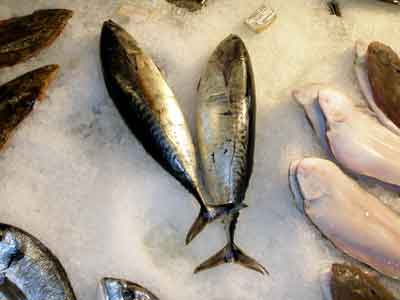A fabricated cut of the veal primal loin. This tender cut is the loin eye muscle removed from the bones.

Bone marrow is the soft, fatty substance in the cavities of long bones such as shin and thigh bones. Described by Simon Hopkinson as tasting like foie gras with a flavour of cow.

This bonito is not the classic, shiny, striped bonito much used in Spanish cooking, but the much rarer bonito found on the North African coast.
This bonito is a migratory fish which is available up to 25 lb (11.3 kg). Although it is often sold as tuna, it is not a tuna at all. They live in shoals in warm seas. Dried shavings are indispensable in many Japanese dishes as the basis of the flavouring for stocks and broths. In the Maldives it is usually cured by boiling, smoking and sun-drying until it is as hard as a piece of wood. This enables it to be kept for a long time. It is used in Sri Lanka in the equivalent of nam pla-like fish sauces.

Little tunny. The little tunny is a handsome fish with black scribble patterns on its back. It has a robust, torpedo-shaped body built for powerful swimming and it has no swim bladder. The mouth is large, the lower jaw slightly protruding past the upper jaw. The flesh of the little tuna is darker and stronger tasting than that of the other large tunas. It is marketed fresh, dried, canned, smoked, or frozen. It is often caught on hook and line near reefs.
Dried bonito flakes, extensively used in Japanese cooking, especially for creating dashi, the stock used as the base of the ubiquitous thin soups. Dried bonito is also sold in blocks called katsuo-kesuriki.
A moist, white, crumbly, pressed goat's milk cheese not unlike Wensleydale from a small dairy in Ayrshire.